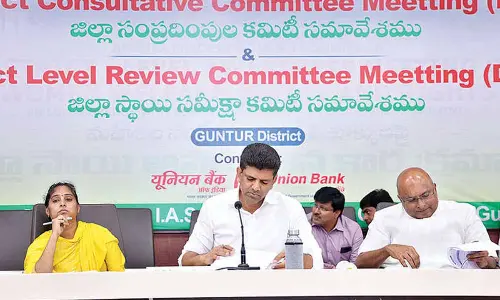Green Tribunal on trial

Green Tribunal on Trial. I t has been four years since the National Green Tribunal (NGT) Act was passed by Parliament for effective and expeditious disposal of cases relating to environmental protection and conservation of forests, and also for giving compensation to the victims of environmental damage.
I t has been four years since the National Green Tribunal (NGT) Act was passed by Parliament for effective and expeditious disposal of cases relating to environmental protection and conservation of forests, and also for giving compensation to the victims of environmental damage.
In three-and-a-half years of its existence, NGT has received accolades and appreciation, but has also been criticised for exceeding its jurisdiction and giving "non-technical" judgements. Amid rumours of a likely amendment in the NGT Act by the Union Ministry of Environment,Forests and Climate Change to "clip its wings", it has become important to review NGT's performance
In the corridors of the Ministry of Environment, Forests and Climate Change (MoEF&CC), growing frustration is evident against NGT. In the four years since it was formed, much has transpired between NGT and MoEF&CC.
NGT has, in many cases, reprimanded the ministry for being absent during hearings. The ministry has repeatedly contended that NGT has been overstepping its jurisdiction.
In fact, in an affidavit filed before Supreme Court, MoEF&CC’S deputy secretary during the previous regime labelled NGT’S conduct an “embarrassment” to the government in Parliament. The affidavit drew heavy criticism from Supreme Court, which termed it as “nonsense”. The then Solicitor General, Mohan Parasaran, later disowned the affidavit.
Lately, there have been many media reports talking about a likely amendment of the NGT Act, by which the institution was formed, to possibly put a “check” on its powers.
But does NGT need to be reined in or do we need to give it more powers? How has it fared on various counts?
Speedy and effective
On October 18, 2010, NGT was established under the chairpersonship of Justice Lokeshwar Singh Panta. Its creation was a result of years of deliberation to address environmental issues in India. It sits in five places-Delhi, Bhopal, Pune, Kolkata and Chennai. A fundamental problem facing the judicial system in India is speedy disposal of cases. The problem is even more pronounced where environmental issues are concerned. A study done by the Delhi-based Centre for Science and Environment (CSE) on the status of cases filed by the state pollution control boards showed that as many as 96 per cent, 76 per cent and 55 per cent of cases filed by Chhattisgarh, Odisha and Karnataka boards respectively, were pending in the lower courts.

In the three-and-a-half years since its establishment, NGT has done much better. It had 6,017 cases instituted and 3,458 cases were disposed of—a rate of about 60 per cent, as of August, 2014.
According to lawyer Ritwick Dutta, who is also a member of NGT’s Bar Association: “When compared to the high courts regarding the handling of environmental matters, NGT has been a much better institution.”
Despite the high percentage of cases being disposed of, there is also an increasing backlog of cases in NGT. Till August 31 this year, 2,559 cases-about 40 per cent of all cases-were pending before different Benches of NGT.
NGT targets to dispose of cases within six months. It has been broadly successful in achieving this aim. However, there have been some high profile cases where NGT has not been able to deliver on time.
But in general, lawyers and petitioners support NGT’S judgements. “NGT is a Constitutional body created for environmental cases alone, with technical members on every bench. This allows cases to be heard on environmental merits as opposed to only legal grounds in any other court,” says Cyriac Kodath, an activist fighting against the Vizhinijam seaport project in Kerala.
An effective deterrent?
More than 50 per cent of the cases filed in NGT relate to green clearances awarded by MoEF&CC to development projects. Lawyer Dutta says that it has created a deterrence impact and even MoEF&CC is today afraid of it. According to him, for the first time in India, while granting a clearance, the ministry is undertaking extensive deliberations and giving reasons for its decisions. Activist Agrawal thinks otherwise and says that most of the cases are merely being sent back for fresh review by the ministry.
Overstepping jurisdiction?
NGT has been accused of overstepping its jurisdiction and taking actions for which it has not been empowered under the NGT Act. Three issues have frequently cropped up. First, does NGT have powers to take cognisance of a matter on its own and take action upon it-the power of suo motu. Second, can NGT review and direct change in rules and regulations-the power of judicial review. Third, can NGT take up any case which can be termed as “substantial question of environment”.
The NGT Act refers to the scope of NGT’s jurisdiction in Sections 14, 15 and 16. Section 19 states that the tribunal can determine its own procedure and this provision has been used by NGT to include within its ambit issues that the NGT Act does not authorise it to adjudicate upon.
However, Justice Swatanter Kumar, NGT chairperson, maintains, “Suomotu jurisdiction has to be an integral feature of NGT for better and effective functioning. Under the Constitution, high courts also have not been exclusively conferred suomotu jurisdiction. However, they have been exercising the power. There are some inherent powers which are vital for effective functioning and suomotu jurisdiction is one such power.”
(With inputs from Sadia Sohail and Srestha Banerjee in New Delhi, Alok Gupta in Patna, Aparna Pallavi in Nagpur and Suchitra M in Kochi)
(Down To Earth)
















